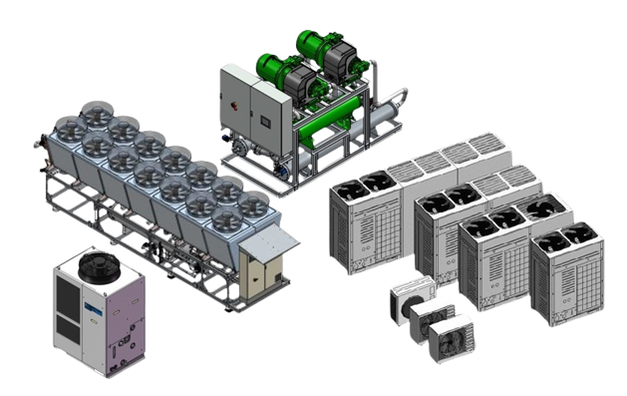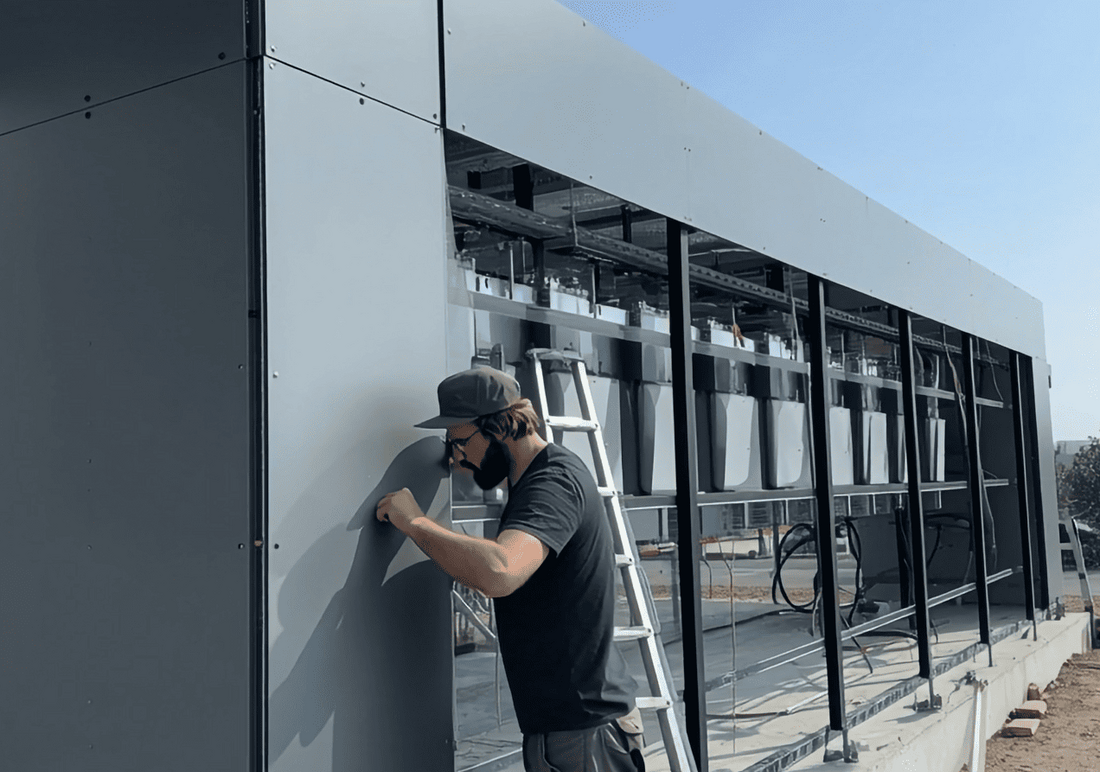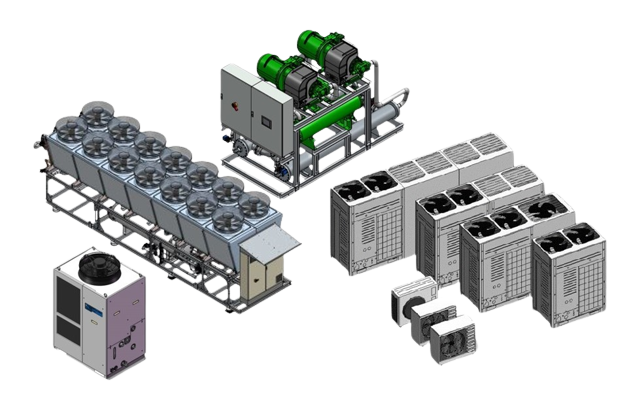|
In a PV field directly adjacent to a residential area, the operation of the inverters caused noise complaints from residents, especially during the summer months.
The dominant sound frequencies of photovoltaic (PV) inverters can be divided into two main ranges: Medium to high frequencies (approx. 200 Hz to 5000 Hz): This range is dominated by fan noise, which is used to cool the inverter. Very high frequencies (approx. 4 kHz to 200 kHz): These frequencies are generated by the internal switching processes of the inverter, by pulse width modulation (PWM) during frequency and voltage conversion. These high-frequency sounds can be perceived as particularly unpleasant, beeping noises. The total sound power of inverters is often in the range of 65 to 84 dB(A). In addition, the reflections of sound from nearby walls cause the noise to spread to more distant areas, which can impair living comfort. One technical problem is that increasing the switching frequency to shift the sound emissions into the barely audible range has a negative impact on the efficiency of the inverter and greatly increases its cooling requirements. The sound enclosure for the 10 inverters has the following dimensions: 11000 x 1800 x 2900 mm (L x W x H). The interior insulation of the enclosure consists of 40 mm thermal insulation and 40 mm sound insulation (StratocellWhisper) on top. All structures for mounting the inverters and routing the cables are also installed in the enclosure. Openings on the underside of the sound enclosure and in the upper area allow fresh air to be supplied and warm air generated by the operation of the inverters to be removed. Although the sound enclosure with RAL-7016 does not have the ideal exterior color to minimize heating from solar radiation, the interior temperature in the enclosure remains around 5 degrees below the ambient temperature thanks to the combination of thermal and sound insulation. This means that the use of the sound hood also prevents temperature-dependent derating, which serves to protect sensitive semiconductor components of the inverter from overheating and causes the inverter to shift its operating point to a lower power level. From an acoustic point of view, it is interesting to note that noise emissions are assessed by the authorities as a total sound level, which significantly reduces the sound reduction requirements as the sound sources are not added together. From a practical point of view, this is nonsense, as the inverters never run in exactly the same operating mode at the same time, so the sound levels should actually be added together (unequal sound source).
0 Comments
|
AuthorWe specialize in reducing noise emissions and increasing the performance of HVAC and industrial systems. Archives
October 2025
Categories |
We support you in solving noise problems - even at your premisesSilent Engineering
di Vicari Romolo Via Trento 22 IT-23875 OSNAGO (LC) www.forcotech.com [email protected] Phone: + 39 349 431 73 42 Contact Form VAT ID: 03833150133 Fiscal Code: VCRRML61E28Z133R Data Protection, Privacy, GDPR More Information ©Copyright (copyright notice) 2019/ 2020 / 2021 / 2022 / 2023 / 2024 / 2025 Silent Engineering - All contents of this website are subject to copyright. All content, in particular texts, images, logos, product names and graphics are protected by copyright. All rights, including reproduction, publication, editing and translation, require the express written authorisation of the website owner. This will only be granted after verification via PEC mail or registered letter. |
Our Brands around soundproofing |



 RSS Feed
RSS Feed




